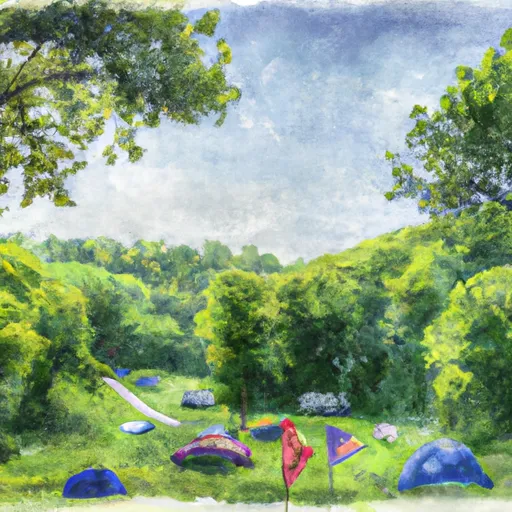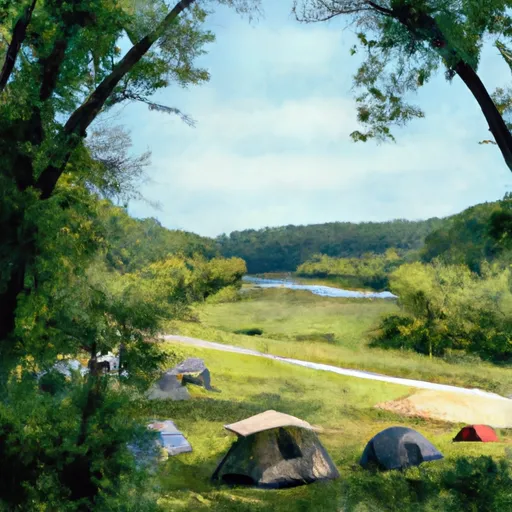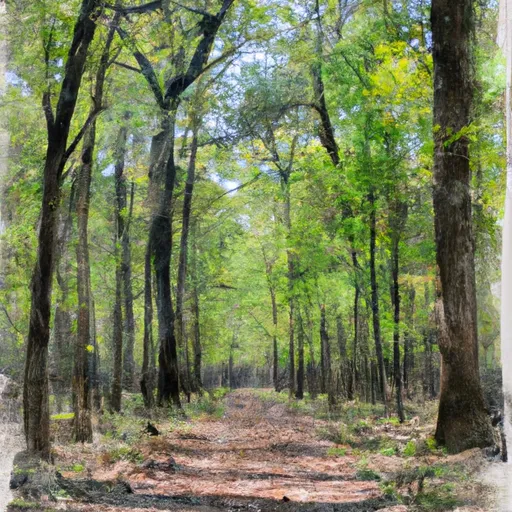Trails Of Tears State Park
Rate this placeLast Updated: December 26, 2025
Trails of Tears State Park is a captivating destination located in Alexander County, Illinois.
°F
°F
mph
Wind
%
Humidity
Summary
This scenic state park is known for its rich history, abundant wildlife, and breathtaking natural beauty. Visitors will find numerous reasons to explore this area, including its diverse range of activities and attractions.
One of the primary reasons to visit Trails of Tears State Park is its historical significance. The park derives its name from the forced removal of Native American tribes, particularly the Cherokee, from their ancestral lands to present-day Oklahoma in the 1830s. It served as a significant site during this tragic event in American history, and visitors can learn about the history and impact of the Trail of Tears at the park's interpretive center.
Nature enthusiasts will find plenty to enjoy in this state park. Trails of Tears State Park encompasses approximately 5,000 acres and offers a variety of outdoor activities. Hiking enthusiasts can explore over 10 miles of scenic trails, which wind through lush forests, along serene lakeshores, and up to panoramic overlooks. The park also offers opportunities for fishing, boating, and picnicking, with Lake Boutin being a popular spot for anglers.
The area's wildlife is another attraction of Trails of Tears State Park. Birdwatchers will be thrilled to spot a variety of species, including bald eagles, herons, and numerous migratory birds. White-tailed deer, wild turkeys, squirrels, and raccoons also call this park home, providing ample opportunities for wildlife observation and photography.
Interesting facts about Trails of Tears State Park include its association with the Civilian Conservation Corps (CCC), which was instrumental in developing the park during the Great Depression. Many of the structures found in the park, such as the stone lodge and picnic shelters, were built by the CCC and add to its historical charm.
The best time of year to visit Trails of Tears State Park depends on personal preferences. Spring offers beautiful wildflower displays and the opportunity to spot migratory birds. Summer is ideal for boating and fishing, while autumn showcases vibrant fall foliage. Winter offers a serene experience with fewer visitors and the chance to observe wildlife in their winter habitats.
To ensure accuracy, it is recommended to verify the information provided by cross-referencing multiple independent sources such as the official website of the Illinois Department of Natural Resources, travel guides, and reputable outdoor recreation websites.
Weather Forecast
Park & Land Designation Reference
Large protected natural areas managed by the federal government to preserve significant landscapes, ecosystems, and cultural resources; recreation is allowed but conservation is the priority.
State Park
Public natural or recreational areas managed by a state government, typically smaller than national parks and focused on regional natural features, recreation, and education.
Local Park
Community-level parks managed by cities or counties, emphasizing recreation, playgrounds, sports, and green space close to populated areas.
Wilderness Area
The highest level of land protection in the U.S.; designated areas where nature is left essentially untouched, with no roads, structures, or motorized access permitted.
National Recreation Area
Areas set aside primarily for outdoor recreation (boating, hiking, fishing), often around reservoirs, rivers, or scenic landscapes; may allow more development.
National Conservation Area (BLM)
BLM-managed areas with special ecological, cultural, or scientific value; more protection than typical BLM land but less strict than Wilderness Areas.
State Forest
State-managed forests focused on habitat, watershed, recreation, and sustainable timber harvest.
National Forest
Federally managed lands focused on multiple use—recreation, wildlife habitat, watershed protection, and resource extraction (like timber)—unlike the stricter protections of national parks.
Wilderness
A protected area set aside to conserve specific resources—such as wildlife, habitats, or scientific features—with regulations varying widely depending on the managing agency and purpose.
Bureau of Land Management (BLM) Land
Vast federal lands managed for mixed use—recreation, grazing, mining, conservation—with fewer restrictions than national parks or forests.
Related References
Area Campgrounds
| Location | Reservations | Toilets |
|---|---|---|
 Trail of Tears State Park
Trail of Tears State Park
|
||
 Pine Hills Campground
Pine Hills Campground
|
||
 Pine Hills
Pine Hills
|
||
 Trail of Tears State Forest
Trail of Tears State Forest
|

 Natural Area Vancill Hollow
Natural Area Vancill Hollow
 Nature Preserve Ozark Hills
Nature Preserve Ozark Hills
 Twin Tree Park
Twin Tree Park
 Trail of Tears State Forest
Trail of Tears State Forest
 Wilderness Bald Knob
Wilderness Bald Knob